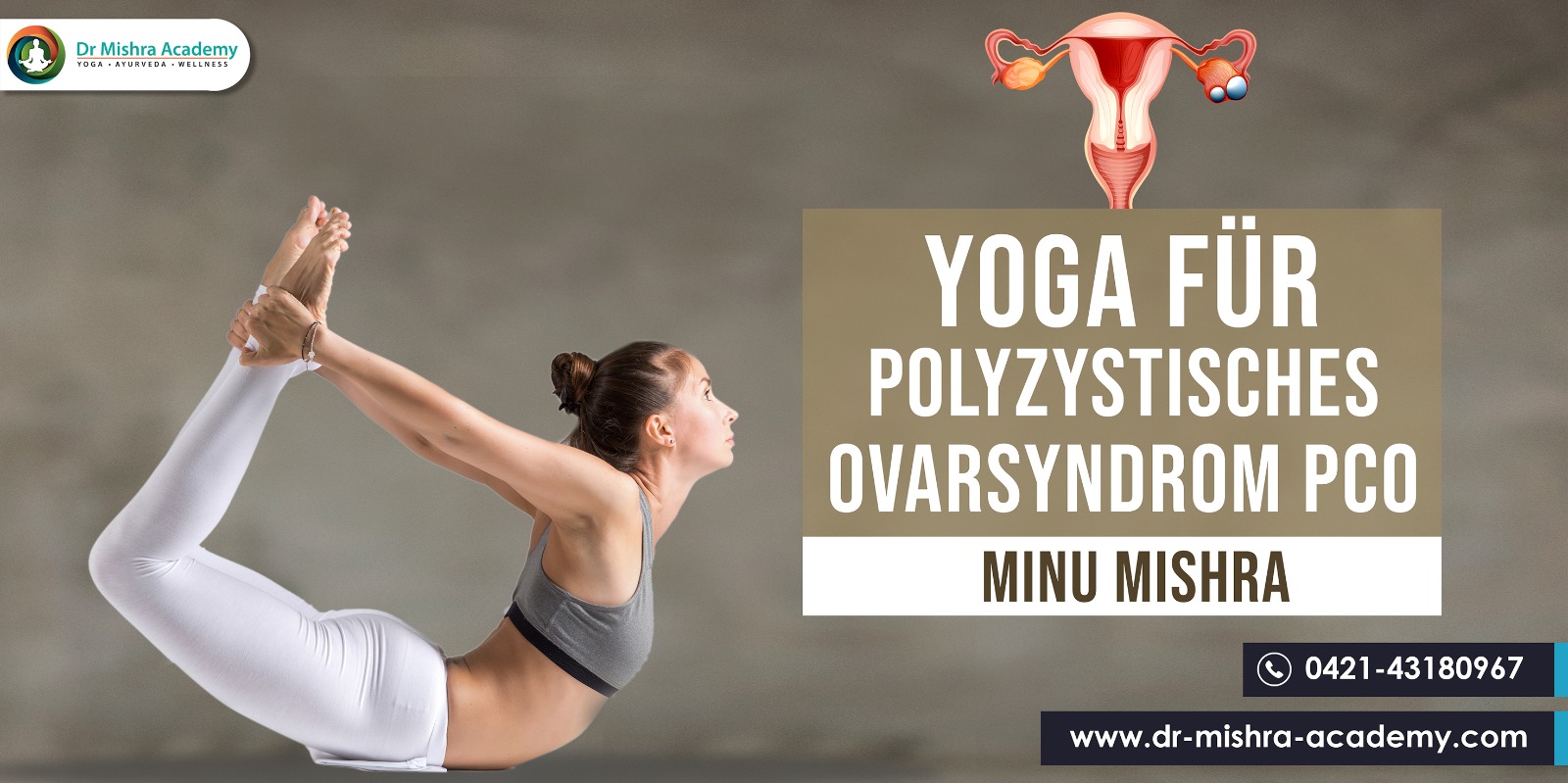Yoga for polycystic ovarian syndrome
Polycystic ovarian syndrome (PCOS) is one of the most prevalent endocrine disorders in women. In this disorder, the ovaries produce abnormally high levels of androgen hormone. Androgen is basically male sex hormone. However, its small qualities are generally present in female body as well. in addition to high androgen levels, the hormonal imbalance in female reproductive system sometimes impede the ovulation (release of mature egg from ovaries). This leads to formation of fluid-filled sacs, named as cysts in ovaries, and this is why the disorder is known as polycystic ovarian syndrome (PCOS). [1]
PCOS Signs And Symptoms
The general signs and symptoms of PCOS include:
- Period abnormalities, irregular periods
- Excessive body hair (hirsutism)
- Sudden weight gain
- Acne and pigmentation
- Hair loss and thinning of hair
- Cysts formation in ovaries
- Infertility
What Causes PCOS?
The etiology of PCOS is still unclear. Apparently, the hormonal imbalance and the insulin resistance are major causative agents of PCOS. Genetics, family history and obesity seem to trigger this endocrinal disorder.
As reported by Center of Disease Control and Prevention (CDC), polycystic ovarian syndrome is among the most common causes of infertility in females, affecting 6 % -12% of US women of reproductive age.
PCOS And Possible Complications
There are certain medications of varying success level and side effects also, PCOS can be managed. Over the course of time, PCOS may lead to certain complications including:
- Increased insulin resistance and risks of diabetes type 2
- Gestational diabetes (diabetes during pregnancy)
- Cardiac ailments such as hypertension
- Hypertension further damages kidneys and other vital organs
- Disturbed sleep pattern, sleep apnea
- Hirsutism (excessive body and facial hair)
- Hair thinning and hair loss
- High density lipoprotein HDL accumulation may lead to stroke
- Psychological health is adversely affected. Stress, anxiety and depression are common.
- Infertility [2]
Yoga for managing polycystic ovarian syndrome
The physical and psychological symptoms associated with this endocrinal disorder adversely affect the quality of life in females. It is, therefore, necessary to manage PCOS. Along with medications, studies suggest that the ideal solution for managing PCOS is to adopt a healthier lifestyle. This means balanced diet, exercise and yoga. Study published in the Journal Of Health Science Reports suggests that yoga is helpful for controlling endocrine function and thus it effectively manages the symptoms of PCOS.
Yoga asana are effective for stretching, toning and massaging the abdominal muscles and reproductive organs. Moreover, yoga postures are helpful for weight loss, relieving menstrual issues such as irregular periods and cramps. Effective yoga asana for managing PCOS are:
- Surya namaskara (sun salutation)
- Uttanasana (standing forward bend)
- Matsyasana (flapping fish pose) Dhanurasana (easy bow pose) Marjariasana (cat stretch pose)
- Paschimottanasana (seated forward bend)
- Siddha yoni asana (accomplished pose for women)
Pranayama For PCOS Management
Yogic breathing practices have revitalizing effects on body. These practices balance the sympathetic and parasympathetic nervous system and thus improve autonomic functions. Yogic breathing practices are effective to relieve and manage PCOS symptoms. [4]
Effective Pranayama in this context are:
- Kapalbhati Pranayama (breath of fire)
- Nadi sodhan Pranayama (alternate nostril breathing)
- Yoga Relaxation Techniques
In addition to yoga asana and Pranayama, yogic relaxation techniques are effective tools for managing PCOS. Study published in the Journal Of American Osteoporotic Association emphasize that holistic approaches such as yoga are much required alongside the available therapies for polycystic ovary syndrome (PCOS). This is based on the fact that regular mindful yoga practice is proven to be effective for relieving physical and psychological symptoms of polycystic ovarian syndrome (PCOS).
Regulator yoga practice reduces the serum androgen levels, the principle hormone associated with PCOS. Yogic interventions are free of side effects. Therefore, yoga is an effective and ideal complementary therapeutic option for women with PCOS. [5]
Summary
Polycystic ovarian syndrome is a common health concern in young women. The millennial old holistic approach of yoga offers a safe and effective option for managing the symptoms of PCOS. Yogic practices work as complementary and alternative therapy for management of this disorder and are free of side effects.
References:
- https://www.hopkinsmedicine.org/health/conditions-and-diseases/polycystic-ovary-syndrome-pcos
- https://www.cdc.gov/diabetes/basics/pcos.html
- Selvaraj, V., Vanitha, J., Dhanaraj, F. M., Sekar, P., & Babu, A. R. (2020). Impact of yoga and exercises on polycystic ovarian syndrome risk among adolescent schoolgirls in South India. Health science reports, 3(4), e212.
- Ansari R. M. (2016). Kapalabhati pranayama: An answer to modern day polycystic ovarian syndrome and coexisting metabolic syndrome?. International journal of yoga, 9(2), 163–167.
- Patel V, Menezes H, Menezes C, Bouwer S, Bostick-Smith CA, Speelman DL. Regular Mindful Yoga Practice as a Method to Improve Androgen Levels in Women With Polycystic Ovary Syndrome: A Randomized, Controlled Trial. J Am Osteopath Assoc. 2020 Apr 14.



